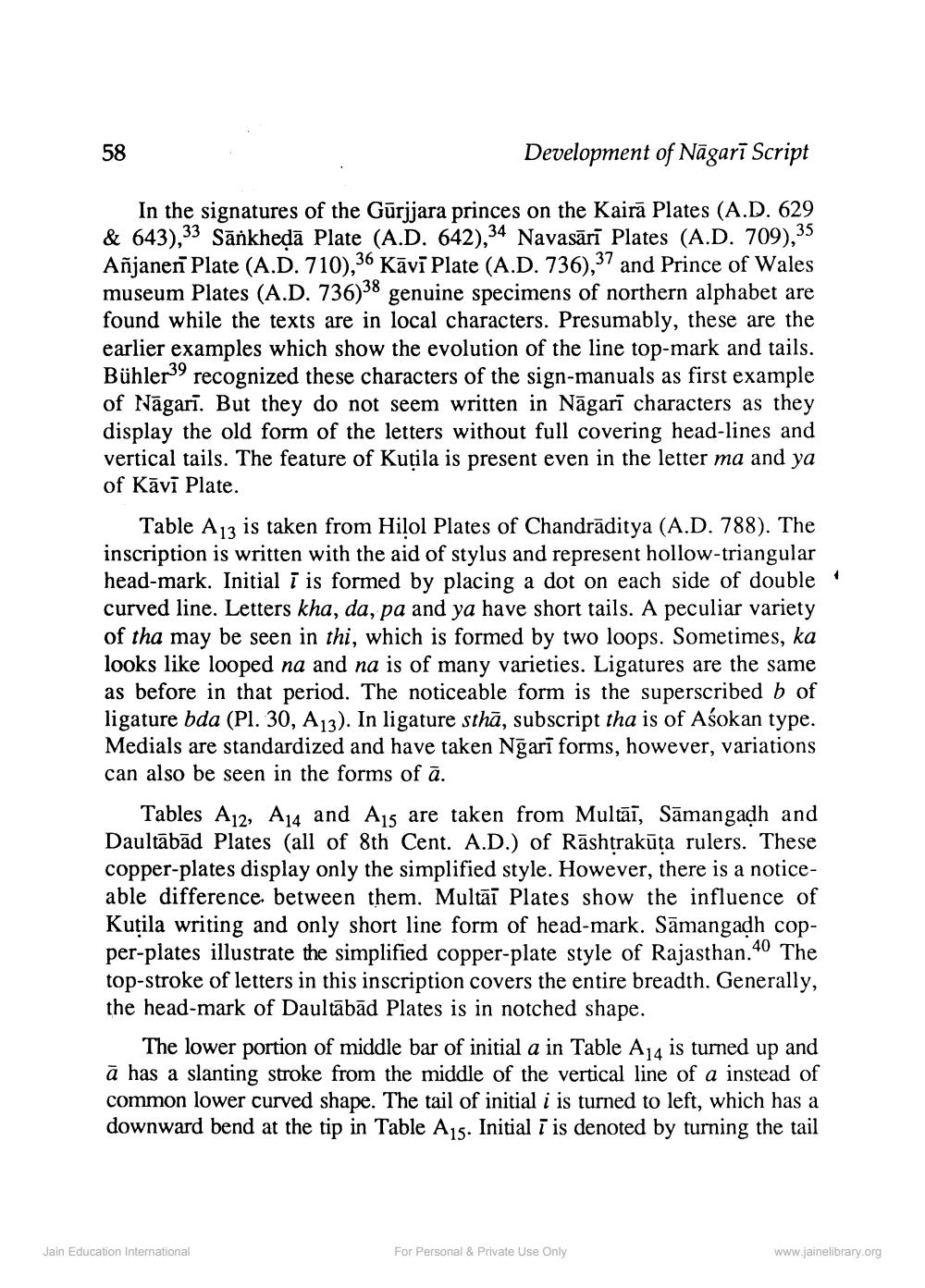________________
Development of Nāgarī Script
In the signatures of the Gürjjara princes on the Kairā Plates (A.D. 629 & 643),33 Sāńkhedā Plate (A.D. 642),34 Navasārī Plates (A.D. 709)," Añjaneri Plate (A.D. 710),36 Kāvī Plate (A.D. 736),37 and Prince of Wales museum Plates (A.D. 736)38 genuine specimens of northern alphabet are found while the texts are in local characters. Presumably, these are the earlier examples which show the evolution of the line top-mark and tails. Bühler39 recognized these characters of the sign-manuals as first exan of Nāgarī. But they do not seem written in Nāgarī characters as they display the old form of the letters without full covering head-lines and vertical tails. The feature of Kutila is present even in the letter ma and ya of Kāvi Plate.
Table A13 is taken from Hilol Plates of Chandrāditya (A.D. 788). The inscription is written with the aid of stylus and represent hollow-triangular head-mark. Initial T is formed by placing a dot on each side of double. curved line. Letters kha, da, pa and ya have short tails. A peculiar variety of tha may be seen in thi, which is formed by two loops. Sometimes, ka looks like looped na and na is of many varieties. Ligatures are the same as before in that period. The noticeable form is the superscribed b of ligature bda (Pl. 30, A13). In ligature sthā, subscript tha is of Asokan type. Medials are standardized and have taken Ngari forms, however, variations can also be seen in the forms of ā.
Tables A12, A14 and Ais are taken from Multāī, Sāmangadh and Daultābād Plates (all of 8th Cent. A.D.) of Rāshtrakūta rulers. These copper-plates display only the simplified style. However, there is a noticeable difference between them. Multāī Plates show the influence of Kutila writing and only short line form of head-mark. Sāmangadh copper-plates illustrate the simplified copper-plate style of Rajasthan.40 The top-stroke of letters in this inscription covers the entire breadth. Generally, the head-mark of Daultābād Plates is in notched shape.
The lower portion of middle bar of initial a in Table A14 is turned up and à has a slanting stroke from the middle of the vertical line of a instead of common lower curved shape. The tail of initial i is turned to left, which has a downward bend at the tip in Table A15. Initial i is denoted by turning the tail
Jain Education International
For Personal & Private Use Only
www.jainelibrary.org




